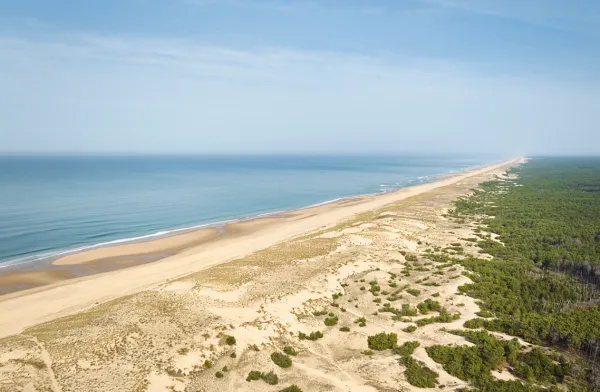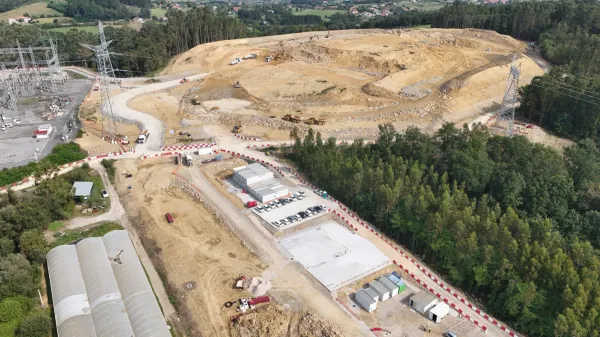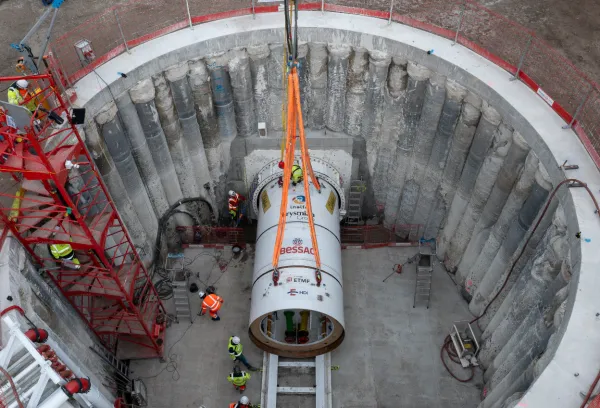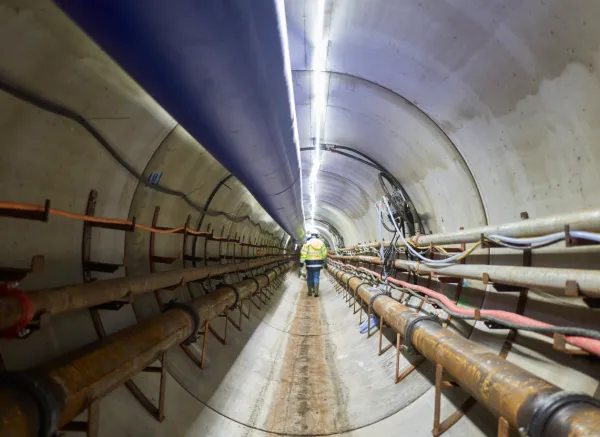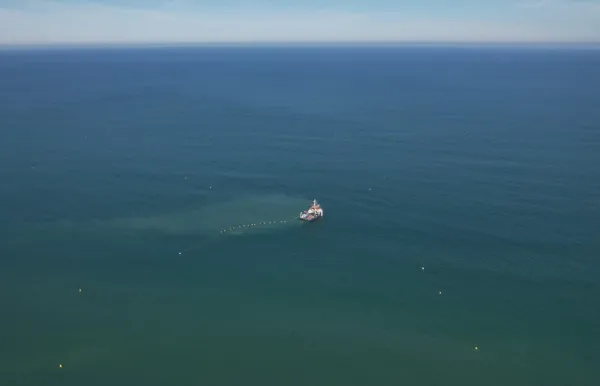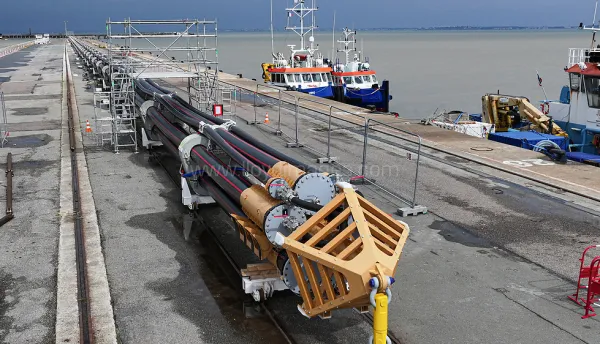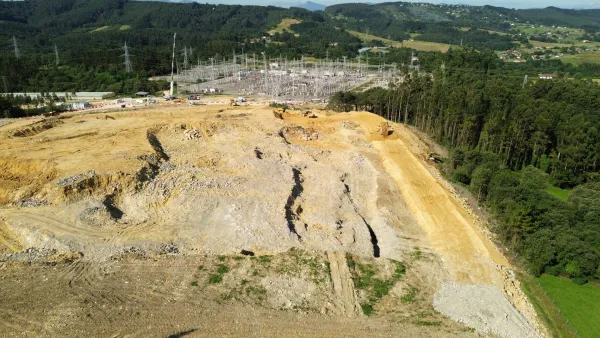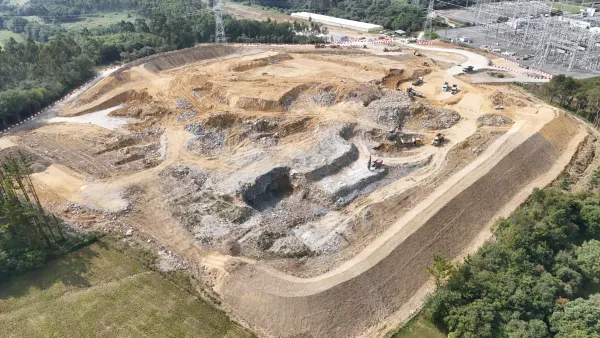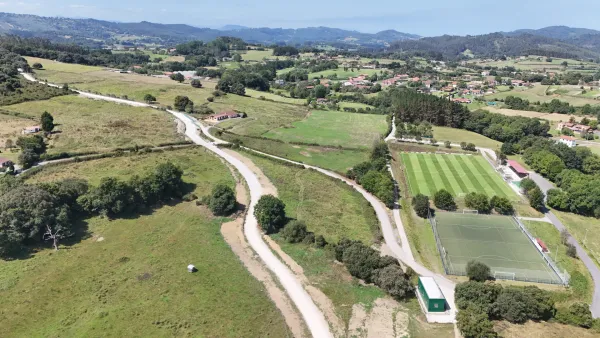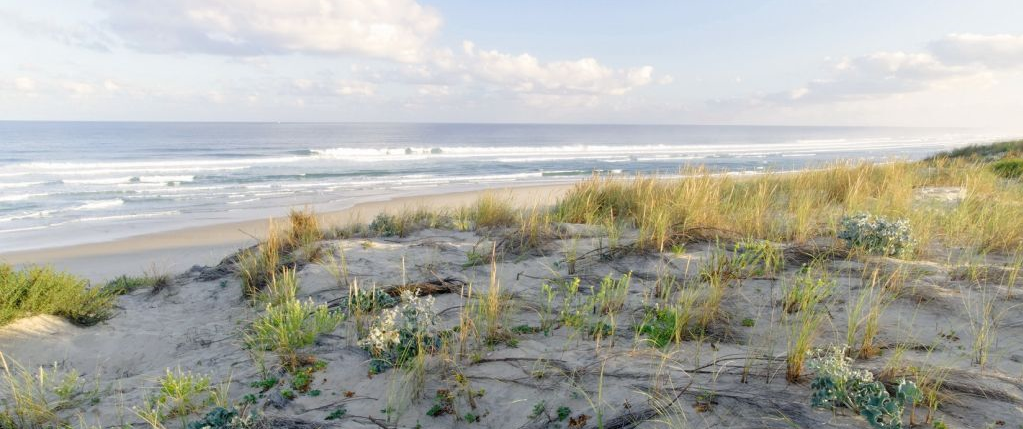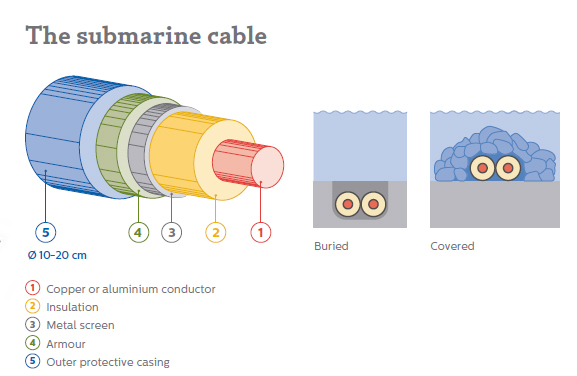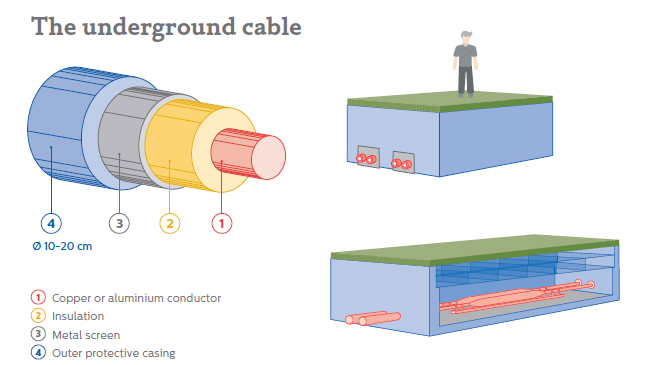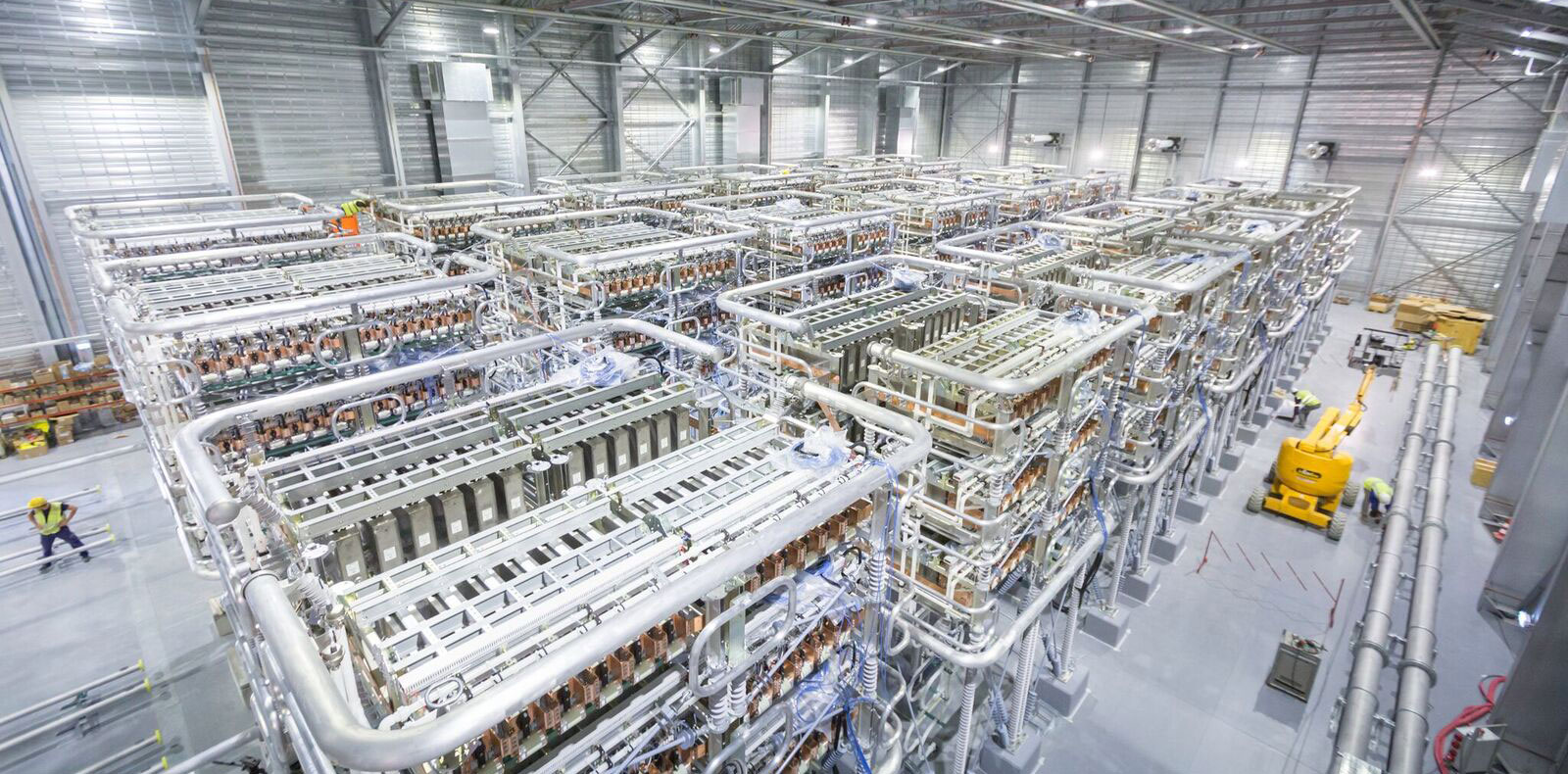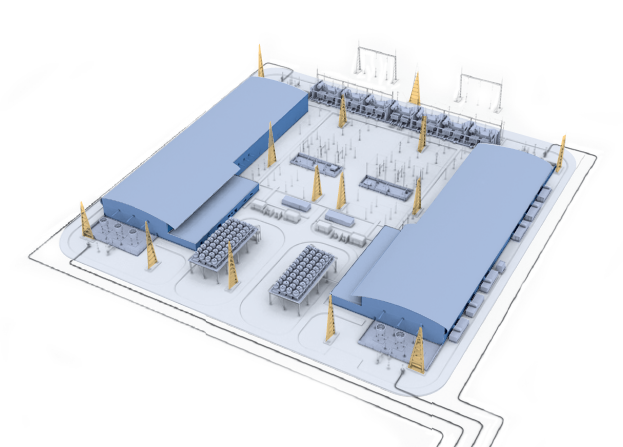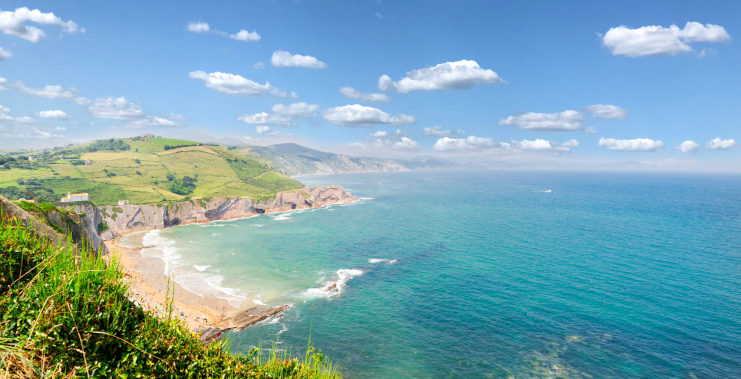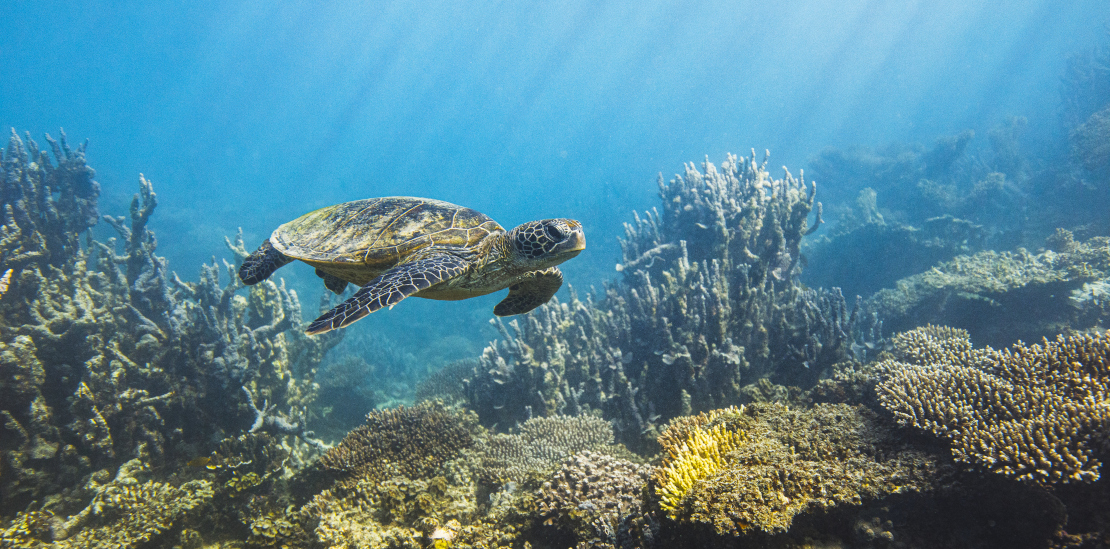400 km
LENGTH OF THE INTERCONNECTION
4 cables
TWO PER LINK
2 x 1,000 MW
TRANSMISSION CAPACITY
Up to 5,000 MW
INCREASE EXCHANGE CAPACITY

2017 - 2021
Consultations
2019
Discovery of instability in the submarine canyon
2018 - 2021
Technical and environmental studies
2021 - 2023
Authorisations
2023 - 2027
Detail studies, supplies and construction
2027 - 2028
Testing and commisioning
EIB supports with €1.6 bn the strategic Bay of Biscay electricity interconnection between Spain and France
• Bay of Biscay is a landmark project for the European power system that will boost the interconnection capacity between the Iberian Peninsula and rest of continental Europe.
• Initiative to increase the exchange capacity from 2,800 to 5,000 megawatts (MW), improving reliability of power supply among France, Spain and Portugal and with the rest of Europe.
• Once operational the interconnection will contribute to ensure cleaner, more secure, and more affordable power for millions of citizens.
• With a total route length of 400 km, 300 km of which underwater, it will become the first submarine electricity interconnection between Spain and Fance.
• This is a Project of Common Interest for the EU being implemented through a joint venture between the transmission system operators of Spain, Red Eléctrica, and France, RTE, Réseau de transport d’électricité.
Red Eléctrica begins construction of the underground line for the Bay of Biscay interconnection with France
The 13 km route in Biscay is entirely underground, completely avoiding urban areas and utilising forestry tracks and paths.
The interconnection also involves the dismantling of two 10 km overhead power lines between Gatika and Lemoiz.
This project will enhance the security and quality of supply for both electrical systems, advance the integration of renewables, and increase the efficiency of both systems.

The electrical connection between France and Spain in the Bay of Biscay has achieved a new milestone with the laying of the first stone for the converter station at Cubnezais.
Cubnezais, 16 May 2025
On Friday, the CEO of Redeia, Roberto García Merino, the chairman of the Board of Directors of RTE, Xavier Piechaczyk, Céline Maquet, sub-prefect of Blaye, representing Etienne Guyot, prefect of the Nouvelle-Aquitaine region, with Jean-Luc Desperiez, mayor of Cubnezais laid the first stone for the future Cubnezais converter station that will connect the electricity systems of France and Spain. The event signals the progress made in the works that began in 2023 and confirms the projected date for the line to enter service in 2028.
The future connection, classed as Project of Common Interest by the European Commission, will double the electricity exchange capacity between both countries to as much as 5,000 MW, equivalent to the consumption of 5 million households. Its role is to make Europe’s electricity supply more secure in view of the challenges facing Europe’s ecological transition and energy sovereignty, and to use the capacities of the French and Spanish electricity transmission grids to offer more secure, affordable and sustainable energy for both systems.
Bay of Biscay interconnection advances with European Commission support
A CINEA delegation visits construction sites on both sides of the border in Gatika, Lemoiz, Cubnezais, Ambès, and Seignosse.
Civil works have begun in the Basque Country on the buildings that will house the new converter station, marking progress on the Bay of Biscay interconnection.
Red Eléctrica is making progress with the dismantling of two power lines from Gatika to Lemoiz
After completing the environmental assessment of the project, the public participation process will commence in an exercise of transparency and commitment to the territory.
The dismantling of the two ten-kilometre overhead power lines will reduce the visual impact on the landscape. The work is encompassed within the interconnection with France through the Bay of Biscay.
Inelfe awards the main contracts for the electricity interconnection project across the Biscay Gulf
Inelfe, a joint venture company owned in equal parts by the Spanish transmission system operator Red Eléctrica and its French counterpart RTE, announces it has awarded the Engineering, Procurement and Construction (EPC) contracts for the Biscay Gulf electricity interconnection project.
Learn more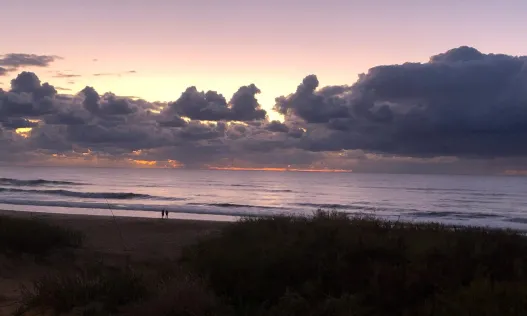
The Biscay Gulf Interconnection project enters the administrative authorisation phase in France and Spain
On the 1st of December, RTE officially submitted the applications for authorisation for the Biscay Gulf electricity interconnection project to the French authorities (Public Utility Declarations, Agreement for the Use of the Public Maritime Domain, Environmental Authorisation, etc.), 7 months after its counterpart, Red Electrica de España (REE), had done the same in Spain.
Learn moreIn the absence of a viable crossing route, RTE and REE launch new studies to bypass the Capbreton Canyon
As part of the studies prior to the construction of the new interconnection between France and Spain via the Biscay Gulf, RTE and REE carried out geological studies of the seabed. They revealed ground instability along the edge of the Capbreton Canyon. Additional analyses conducted since June have not identified a route under the canyon that is guaranteed to be stable for the life of the power line.
RTE and REE are therefore forced to abandon this solution and define a new route around the canyon.
RTE and REE perform additional analysis to secure the Biscay Gulf project
As part of the studies prior to the construction of the new interconnection between France and Spain via the Biscay Gulf, RTE and REE carried out extensive geological studies of the seabed. The latest studies, at the beginning of May, revealed soil instability very close to the Capbreton canyon, in French waters.
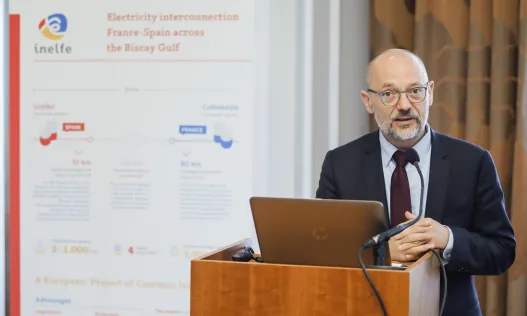
Meeting with suppliers in Brussels
Inelfe organised a meeting with HVDC cable, converter station, submarine cable and drilling suppliers in Brussels. Held between 16 and 20 April, its goal was to explain the scope of the interconnection project between Spain and France via the Bay of Biscay and to exchange information on the best way to implement the project (technology, materials, implementation procedures, etc.).
Learn moreSupplier´s Event 2018
HVDC cables and converter stations for the Biscay Gulf electricity interconnection between France and Spain
Learn moreEIB supports with €1.6 bn the strategic Bay of Biscay electricity interconnection between Spain and France
• Bay of Biscay is a landmark project for the European power system that will boost the interconnection capacity between the Iberian Peninsula and rest of continental Europe.• Initiative to increase the exchange capacity from 2,800 to 5,000 megawatts (MW), improving reliability of power supply among France, Spain and Portugal and with the rest of Europe.
• Once operational the interconnection will contribute to ensure cleaner, more secure, and more affordable power for millions of citizens.
• With a total route length of 400 km, 300 km of which underwater, it will become the first submarine electricity interconnection between Spain and Fance.
• This is a Project of Common Interest for the EU being implemented through a joint venture between the transmission system operators of Spain, Red Eléctrica, and France, RTE, Réseau de transport d’électricité. Learn more
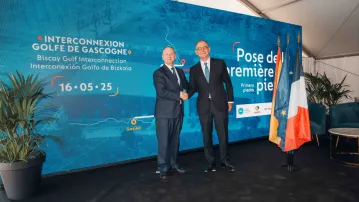
The electrical connection between France and Spain in the Bay of Biscay has achieved a new milestone with the laying of the first stone for the converter station at Cubnezais.
Cubnezais, 16 May 2025On Friday, the CEO of Redeia, Roberto García Merino, the chairman of the Board of Directors of RTE, Xavier Piechaczyk, Céline Maquet, sub-prefect of Blaye, representing Etienne Guyot, prefect of the Nouvelle-Aquitaine region, with Jean-Luc Desperiez, mayor of Cubnezais laid the first stone for the future Cubnezais converter station that will connect the electricity systems of France and Spain. The event signals the progress made in the works that began in 2023 and confirms the projected date for the line to enter service in 2028.
The future connection, classed as Project of Common Interest by the European Commission, will double the electricity exchange capacity between both countries to as much as 5,000 MW, equivalent to the consumption of 5 million households. Its role is to make Europe’s electricity supply more secure in view of the challenges facing Europe’s ecological transition and energy sovereignty, and to use the capacities of the French and Spanish electricity transmission grids to offer more secure, affordable and sustainable energy for both systems. Learn more
Bay of Biscay interconnection advances with European Commission support
A CINEA delegation visits construction sites on both sides of the border in Gatika, Lemoiz, Cubnezais, Ambès, and Seignosse.Civil works have begun in the Basque Country on the buildings that will house the new converter station, marking progress on the Bay of Biscay interconnection. Learn more
Red Eléctrica is making progress with the dismantling of two power lines from Gatika to Lemoiz
After completing the environmental assessment of the project, the public participation process will commence in an exercise of transparency and commitment to the territory.The dismantling of the two ten-kilometre overhead power lines will reduce the visual impact on the landscape. The work is encompassed within the interconnection with France through the Bay of Biscay. Learn more
Inelfe awards the main contracts for the electricity interconnection project across the Biscay Gulf
Inelfe, a joint venture company owned in equal parts by the Spanish transmission system operator Red Eléctrica and its French counterpart RTE, announces it has awarded the Engineering, Procurement and Construction (EPC) contracts for the Biscay Gulf electricity interconnection project. Learn more
The Biscay Gulf Interconnection project enters the administrative authorisation phase in France and Spain
On the 1st of December, RTE officially submitted the applications for authorisation for the Biscay Gulf electricity interconnection project to the French authorities (Public Utility Declarations, Agreement for the Use of the Public Maritime Domain, Environmental Authorisation, etc.), 7 months after its counterpart, Red Electrica de España (REE), had done the same in Spain. Learn moreIn the absence of a viable crossing route, RTE and REE launch new studies to bypass the Capbreton Canyon
As part of the studies prior to the construction of the new interconnection between France and Spain via the Biscay Gulf, RTE and REE carried out geological studies of the seabed. They revealed ground instability along the edge of the Capbreton Canyon. Additional analyses conducted since June have not identified a route under the canyon that is guaranteed to be stable for the life of the power line.RTE and REE are therefore forced to abandon this solution and define a new route around the canyon.
Learn more
RTE and REE perform additional analysis to secure the Biscay Gulf project
As part of the studies prior to the construction of the new interconnection between France and Spain via the Biscay Gulf, RTE and REE carried out extensive geological studies of the seabed. The latest studies, at the beginning of May, revealed soil instability very close to the Capbreton canyon, in French waters.Learn more
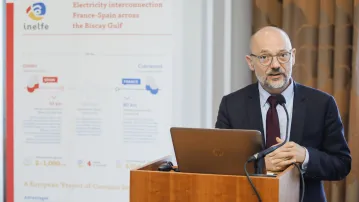
Meeting with suppliers in Brussels
Inelfe organised a meeting with HVDC cable, converter station, submarine cable and drilling suppliers in Brussels. Held between 16 and 20 April, its goal was to explain the scope of the interconnection project between Spain and France via the Bay of Biscay and to exchange information on the best way to implement the project (technology, materials, implementation procedures, etc.). Learn moreSupplier´s Event 2018
HVDC cables and converter stations for the Biscay Gulf electricity interconnection between France and Spain Learn morePRESS CONTACT
Gabinetedeprensa@ree.es
rte-presse@rte-france.com
PRESS AREA
- Press releases
- High resolution images
- Branding Manual
- Iconography
VIDEOS
Send us your questions
Make sure your question gets to the right person. Choose a question type to ensure the best and fastest response.
Frequently Asked Questions
ABOUT INTERCONECTIONS’ BENEFITS
An interconnected network will help achieve one of the goals of the Energy Union: to guarantee affordable, safe and sustainable energy compatible with growth and employment throughout the European Union.
- Security of Supply, especially when consumption is high.
Interconnectors allow a country to import electricity form another when needed, for instance in when consumption is high or in case of technical incident. - More renewable energies integration.
Connecting national grids will allow renewable energies to flow across Europe and be available for European consumers. - The cheapest electricity to flow in Europe.
Interconnectors allows the cheapest electricity to flow in Europe for the benefit of the consumer.
The European Union (EU) strongly supports the project. Promoting interconnections between EU member States is one of the cornerstones of the EU energy policy. They will provide the European consumers with a more secure electricity, at the best cost. In addition, interconnections will increase the integration of renewable energy. EU, indeed, has included the project in the fourth existing lists of Projects of Common Interest (PCI)1.
The interconnection capacity between Spain and France is among the lowest of all the European countries and remains well below the 10% interconnection target for 2020 and 15% interconnection target for 2030.
1The 5th PCI list was published in the Official Journal of the European Union las 19th November 2021.
No, the rate of usage of the existing lines is very high, and they are saturated most hours of the year. In fact, in the last 3 years the Spain-France electric border was saturated 76% of the hours.
ABOUT THE PROJECT
This solution is the best because it avoids building new high voltage overhead power lines (400kV). It allows us not to reinforce the existing grid.
This is the project with the least impact on the territory.
The line will be fully buried, both in land and offshore. In addition, most part of the line will be offshore. The start and end points of the line were considered the best solution because they avoid building new high voltage overhead power lines (400kV) for the interconnection itself, as well as for the neighbouring 400 kV network.
For instance, in France, should a 400 kV connection point be chosen closer to the border (Pyrénées Atlantiques, Landes), a new high voltage overhead power line would have been necessary to reach Cubnezais. The existing 400 kV overhead lines are not powerful enough to transmit 2000 MW of additional power.

Yes, the information and public participation phase of the project was initiated in September 2017 according to the European requirements that establish that this type of process must be conducted in the initial planning stage of trans-European energy infrastructure (Regulation 347/2013 applied to the PCIs). This phase was concluded on 15 March 2018.
Link here for more information
Cada país tiene un proceso de consulta pública diferente en función de su propia reglamentación nacional.
Please link here for more info about the French public consultation process.
Please link here for more info about the Spanish public consultation process.
RTE and REE ensure the highest level of transparency possible, in accordance with national and European legislation. In this regard, public administrations, organisations and individuals may present arguments, at any time during the project’s permitting process. All arguments will be reviewed and answered, and those aspects that are considered viable and relevant from a technical and environmental point of view will be incorporated into the project.
All the necessary information regarding the project, including contact details or ways of participating in public consultations may be found on our website www.inelfe.eu, including several ways of contacting the project team.
ABOUT FINANCIAL ASPECTS OF THE PROJECT
The initial planned investment was €1,750,000,000. However, on March 2, 2023, the regulators of both countries agreed to update it to €3,100,000,000 due to the saturated market for construction materials, further exacerbated by the limited supply of companies with the technical and technological capacity to provide the necessary construction assets and services.
This amount is divided 50% between the two carriers up to €2,390,000,000. Beyond that, up to €2,700,000,000, 62.5% will be borne by REE and 37.5% by RTE. Any amount above €2,700,000,000 will be shared equally between the two carriers.
The European Union has allocated €578,000,000 to the project through its "Connecting Europe Facility" (CEF) program, with €350,000,000 for France and the remaining €228,000,000 for Spain. This lower amount for Spain is compensated by the benefits the project brings to the country. In other words, the benefit of the interconnection is slightly higher for the Spanish consumer.
To date, this is the largest grant awarded by the EU to a common interest energy project.
This project is profitable, as both French and Spanish regulators have certified. Its potential benefits outweigh its cost. It will allow the European electrical system to be more efficient with lower costs.
The economic valuation of the actions for the development of the transmission grid has been calculated in accordance with a cost-benefit analysis (CBA) methodology taking into account a global perspective of the electricity system and, in particular, that of the final consumer.
Therefore, the benefit of the transmission grid development for society is evaluated by comparing the cost-benefit ratio associated with the scenarios that contemplate the planning and carrying out of a new action or a set of actions in the transmission grid versus the situation of the not carrying out any developments in the grid.
As required by Regulation (EU) n°347/2013, ENTSO-E has developped a cost-benfit analysis methodology for the evaluation of transport and storage infrastructure projects included in the Ten-Year Network Development Plan (TYNDP). The European Commission has approved this methodology which is the one used for the Bay of Biscay project.
The investment will partly come from the electricity bill, as with all electrical infrastructures, and partly from European funds. As mentioned, the project is profitable, and its benefits will exceed its costs. It will help make electrical systems more efficient and allow cheaper energy to circulate more easily. It is necessary to invest today to obtain cleaner energy in the future.
ABOUT HEALTH AND ENVIROMENTAL ASPECTS
The cable used for the project is designed with a shield, and therefore no electric fields are generated. In addition, the electrical line between France and Spain will be a direct current (DC) one. For this reason, the effects of the magnetic field are even smaller because they are static in nature (0 Hz), that is, with the same characteristic and similar effects as the Earth's magnetic field.
The future line will thus be under every European threshold in terms of EMF.
They will be very limited. The line will be buried in the seabed of the Biscay Gulf and in the land parts of the route, and therefore will have no visual impact. Only the converter stations, at both ends of the interconnection will be visible. That been said, these converter stations will be built close to the existing electricity 400 kV substations and studies are being carried out to achieve the best possible integration into the landscape.
From an economic perspective, INELFE helps major contractors’ needs for subcontracting to meet local companies’ offers as much as allowed by the regulations.
From a social perspective, INELFE will also insert social clauses in its contracts so as to favour social reintegration of long-term job seekers.
Furthermore, the projects undertaken by INELFE integrate themselves into the various areas they affect. INELFE helps highlight these areas through support for cultural, sports and public events.
For instance, the construction of the first electric line (though the Pyrenees) had a positif impact.
Direct local financial benefits in France (to the regional administrative scale in use at the project time Languedoc Roussillon) have been estimated to 37.8 M€. 95 people were employed from local human resources during every phase of the works, from a 3 to 36 months timespan, thanks to public authority’s involvement. 8 people have been hired with a permanent contract by one of the provider and 1 by RTE.
Yes !
The greenhouse gas emissions of interconnection projects are evaluated in a homogeneous way by ENTSOE, the European association of transmission system operators, according to a precise and transparent methodology. According to the latest evaluation based on 2030 scenario:
- The volume of renewable energy curtailment avoided is estimated at 7,431 GWh/year.
- The electrical losses generated by project, in the project itself as well as in the rest of the European network are estimated at 2,576 GWh/year.
Hence, the Greenhouse gases emission of the European electricity System is reduced by 4,855 GWh/year.

